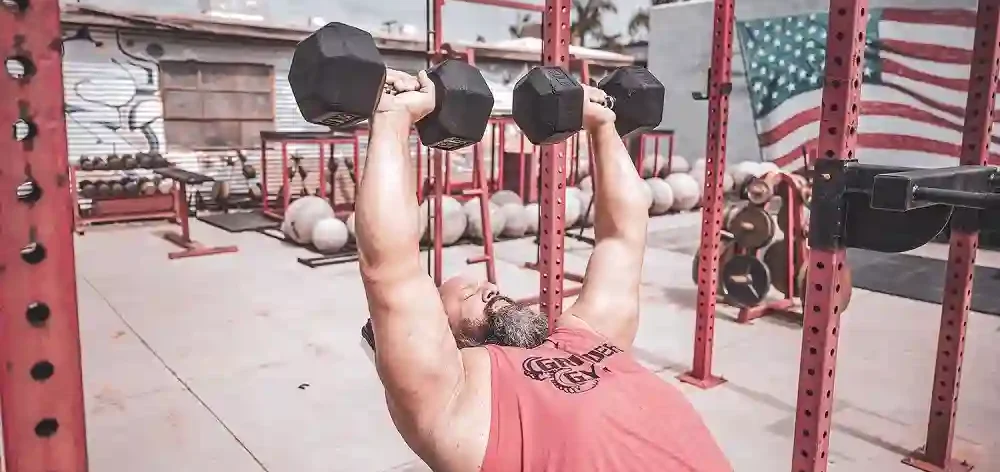Starting your athletic journey can be exciting and overwhelming at the same time. Whether you’re preparing for your first 5k run, beginning a weightlifting routine, or taking up a new sport, one thing is certain: the right gear can make all the difference. It can enhance your performance, improve safety, and even help prevent injuries.
As a beginner athlete, you may not yet know exactly what you need or how to get started. To help guide you, we’ve put together a comprehensive list of
essential gear for every beginner athlete. From the basics like shoes and clothing to specialized equipment for specific sports, this guide will set you on the path to success.
- Proper Footwear: The Foundation of Your Athletic Performance
No matter what sport you choose, your feet are the foundation of your performance. Wearing the wrong type of shoes can lead to discomfort, blisters, and even serious injuries. Therefore, choosing the right footwear for your specific activity is the most important first step for any beginner athlete.
Running Shoes
If running or jogging is your chosen sport, investing in a pair of high-quality
running shoes is crucial. Running shoes are designed to provide the right amount of cushioning, support, and flexibility for your feet. They come in various types based on your gait and running style:
- Neutral Shoes: Ideal for those with a natural gait.
- Stability Shoes: Perfect for runners who overpronate (roll their feet inward).
- Motion Control Shoes: Designed for runners with severe overpronation.
Proper running shoes help reduce impact on your joints, promote proper form, and prevent common injuries like shin splints, plantar fasciitis, or knee pain.
Cross-Training Shoes
For those starting a fitness journey that involves a variety of activities such as circuit training, weightlifting, or group fitness classes,
cross-training shoes are a versatile choice. These shoes are built to handle multiple movements, such as lateral cuts, jumps, and squats, offering support in various directions.
Sports-Specific Footwear
For sports like soccer, basketball, or tennis, each activity has its own specialized footwear:
- Soccer Cleats: Essential for good grip on grass or turf fields.
- Basketball Shoes: Provide ankle support and cushioning to absorb the impact of jumping and pivoting.
- Tennis Shoes: Offer stability and comfort for the quick lateral movements common in tennis.
In Conclusion
Proper footwear is essential for preventing injuries and enhancing performance. Make sure to choose shoes that align with the specific activity you are engaging in, and replace them regularly to maintain optimal comfort and support.
- Comfortable Clothing: Freedom of Movement
Comfortable clothing that allows for free movement is key for any athlete. Whether you’re running, lifting weights, or practicing yoga, your clothes should support your body and the specific motions of your workout.
Moisture-Wicking Fabrics
For any physical activity,
moisture-wicking fabrics are an absolute must. These materials, such as polyester or merino wool, draw sweat away from your skin, keeping you dry and comfortable during your workout. Avoid cotton, as it tends to trap moisture, which can lead to chafing and discomfort.
Sports Bras
For women, a high-quality
sports bra is crucial, especially for high-impact activities like running or aerobics. A sports bra provides support and minimizes breast movement, which can cause discomfort during exercise. Choose a sports bra based on your activity level—low, medium, or high impact.
Compression Gear
Compression wear such as sleeves, socks, or leggings can aid in muscle recovery and blood circulation. Many athletes use compression gear during or after exercise to help reduce muscle soreness and speed up recovery. While not mandatory for beginners, they can be useful in enhancing comfort and supporting performance.
Layering for Outdoor Activities
If you plan to work out outdoors, make sure to dress in layers. A moisture-wicking base layer, an insulating middle layer, and a waterproof outer layer will keep you comfortable in various weather conditions. Don’t forget a hat, gloves, and appropriate socks for colder conditions.
In Conclusion
Clothing plays a significant role in your workout experience. Opt for gear that allows freedom of movement and wicks away moisture to keep you comfortable and focused.
- Hydration Gear: Stay Refreshed
Staying hydrated is a must for every athlete, especially for beginners who are still acclimating to physical activity. Dehydration can affect your energy levels, performance, and recovery time. Hydration gear ensures that you have access to fluids when needed, no matter where your workout takes you.
Water Bottles
A reusable
water bottle is essential for easy access to water throughout the day. Look for bottles that are leak-proof, easy to carry, and have a wide mouth for easy filling and cleaning. Some bottles even come with built-in filters, so you can refill them at water fountains or other sources.
Hydration Packs
For longer workouts or outdoor activities like hiking, cycling, or running, a
hydration pack (a backpack with a built-in water reservoir and tube for drinking) can be incredibly useful. These packs allow you to drink hands-free, which is especially convenient during long or intense exercise sessions.
Electrolyte Supplements
When engaging in prolonged physical activity, you may sweat out essential electrolytes, such as sodium, potassium, and magnesium.
Electrolyte supplements (in the form of powders, tablets, or drinks) help replenish these vital nutrients and prevent muscle cramps, fatigue, and dehydration.
In Conclusion
Hydration is key to maintaining your performance and well-being. Be sure to carry a water bottle or hydration pack during your workouts, and consider electrolyte supplements if you’re engaging in longer sessions.
- Fitness Tracking Devices: Monitor Progress and Set Goals
Fitness trackers are an excellent way for beginners to monitor their activity levels and set fitness goals. These devices track key metrics such as steps taken, calories burned, heart rate, and sleep patterns, giving you valuable insights into your progress.
Activity Trackers
Activity trackers, such as the
Fitbit or
Garmin, offer basic features like step counting, distance tracking, and heart rate monitoring. They can sync with mobile apps to provide detailed reports of your workouts, helping you assess your performance over time.
Smartwatches
A
smartwatch like the
Apple Watch or
Samsung Galaxy Watch offers more advanced features, including GPS tracking, workout modes for specific activities (e.g., running, cycling, swimming), and notifications for calls, texts, and app updates. Smartwatches are perfect for athletes who want to stay connected while staying active.
Heart Rate Monitors
For those serious about optimizing their workouts,
heart rate monitors can be invaluable tools for training in specific heart rate zones. These monitors track your heart rate in real-time, helping you adjust your intensity levels to improve endurance or fat burning.
In Conclusion
Fitness trackers and wearables are a great way to stay accountable to your fitness goals. Whether you prefer a simple step counter or a smartwatch with all the bells and whistles, these devices can provide the motivation you need to stay on track.
- Protective Gear: Stay Safe During Activity
If you are starting a sport with higher risk or intense physical activity, such as cycling, skiing, or martial arts, investing in protective gear is essential for your safety. Here’s what you might need based on the activity you choose.
Helmets
A
helmet is a non-negotiable safety gear item for any beginner athlete participating in activities like cycling, skiing, or skateboarding. A good-quality helmet protects your head from serious injury in the event of a fall or collision.
Knee and Elbow Pads
For sports like skateboarding, rollerblading, or mountain biking,
knee and elbow pads help protect your joints during falls. These pads cushion the impact and can prevent bruises, scrapes, and more severe injuries.
Wrist Guards
If you’re doing sports that involve quick movements and potential wrist injury (e.g., skateboarding or certain types of weightlifting),
wrist guards offer added protection. They stabilize the wrist joint and prevent sprains or fractures.
In Conclusion
Safety should always come first. Protective gear is a wise investment for any athlete, especially beginners who are still learning the ropes of their chosen sport. Wearing appropriate safety equipment can prevent injuries and ensure a more enjoyable experience.
- Sports-Specific Equipment
Depending on the sport or activity you choose, you may need specialized equipment. Here are a few essentials based on different types of sports:
Running
If you’re into running, aside from shoes and clothing, you may also need a
good-quality running watch to track your progress and performance. You may also consider a
foam roller for post-run recovery to prevent muscle soreness.
Cycling
For cycling, aside from a helmet and protective pads, you’ll need a
bike suited to your riding style (road, mountain, or hybrid) and
cycling gloves for a better grip and hand protection.
Weightlifting
For those beginning strength training, essentials include
dumbbells or
kettlebells, a
mat for floor exercises, and
lifting gloves for grip and hand protection.
Yoga
For yoga, the primary gear you need is a
yoga mat, which provides cushioning and support during your practice. You might also want to invest in
blocks,
straps, and comfortable
activewear for more flexibility during your poses.
In Conclusion
As a beginner athlete, specialized gear tailored to your chosen sport can make a world of difference in performance, safety, and comfort. Make sure you invest in the right tools for your activity to ensure you’re getting the most out of your workout.
Conclusion
Whether you’re just starting your fitness journey or you’re diving into a new sport, the right gear is essential for success. By choosing proper footwear, comfortable clothing, hydration gear, fitness trackers, protective equipment, and sports-specific tools, you’re setting yourself up for a safer and more enjoyable experience.
Remember that as a beginner, the key is not only finding the right gear but also learning how to use it effectively and comfortably. Start slow, listen to your body, and gradually build your collection of gear as you progress in your athletic journey. With the right equipment and mindset, you’ll be on your way to achieving your fitness goals in no time.
Read More latest Posts





